A Step-by-Step Guide to Safely Removing Mold from Walls
Are you tired of dealing with pesky mold in your walls? Say goodbye to mold once and for all with our foolproof guide to removing mold in walls. Whether it’s a small patch or a widespread infestation, we’ve got you covered. With our step-by-step instructions and expert tips, you can banish mold and restore your walls to their pristine condition. Our foolproof guide to removing mold in walls considers the different types of mold and the potential health risks they pose.
We’ll walk you through the necessary safety precautions and the best tools and products for effective mold removal. From identifying the source of moisture to disinfecting and preventing future mold growth, our foolproof guide to removing mold in walls provides everything you need to know. Don’t let mold ruin the appearance and air quality of your home. Follow our foolproof guide to removing mold in walls and reclaiming your walls from mold. Say goodbye to mold for good and enjoy a healthier, mold-free living space.
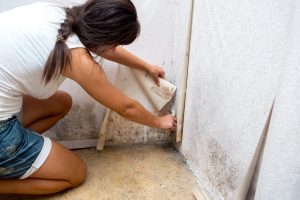
Understanding mold: causes and risks
Mold is a persistent problem many homeowners face, and it can be a real challenge to eliminate. Mold thrives in damp, humid environments and can quickly spread, causing significant damage to walls, ceilings, and other surfaces. Understanding the causes and risks of mold is the first step in effectively removing mold in walls from your home.
Mold can grow on various surfaces, including wood, drywall, and concrete. It’s often caused by excess moisture, such as leaks, flooding, or high humidity. Poor ventilation can also contribute to mold growth, as it allows moisture to accumulate and create the perfect conditions for mold to thrive. When it comes to removing mold in walls, addressing the moisture source is crucial to prevent recurrence.
The risks associated with mold exposure can be significant, particularly for those with respiratory conditions or weakened immune systems. Removing mold in walls is essential, as mold can trigger allergic reactions, asthma attacks, and other respiratory problems. Some types of mold can also produce toxins that can harm human health. Prolonged mold exposure, especially without removing mold in walls, can lead to more serious health issues, such as respiratory infections and neurological problems.
Finally, prompt action in removing mold in walls can protect your home’s structure and safeguard your health.
Signs of mold on walls
Identifying the presence of mold in your walls is the first step in addressing the problem. There are several signs to look for, including visible mold growth, musty odors, and discoloration of the wall surface. If you suspect mold in your walls, it’s important to act quickly to prevent the problem from worsening.
One of the most obvious signs of mold in walls is visible mold growth. This can appear as fuzzy, slimy, or powdery patches on the wall surface and can range in color from green and black to white and orange.
Mold can also grow behind wallpaper or paint, so inspect any discolored or damaged areas.
Another sign of mold in the walls is a musty odor. Mold has a distinct, earthy smell that can be difficult to miss. If you notice a persistent musty smell in a particular area of your home, it could indicate mold growth behind the walls.
In addition to visible mold growth and musty odors, you may also notice discoloration or damage to the wall surface. This can include peeling paint, crumbling drywall, or water stains. These are all signs that moisture is present, which can create the perfect conditions for mold to thrive.
Health hazards of mold exposure
Mold exposure can have serious health consequences, particularly for individuals with respiratory conditions or weakened immune systems. Mold exposure can trigger various symptoms, from mild irritation to more severe respiratory problems. This makes removing mold in walls essential for maintaining a healthy living environment.
One of mold exposure’s most common health issues is allergic reactions. Mold can trigger sneezing, coughing, and itchy, watery eyes in individuals with mold allergies. In some cases, mold exposure can also lead to asthma attacks, as the spores can irritate the airways and cause inflammation. By removing mold in walls, you can significantly reduce the risk of these health issues.
In addition to allergic reactions, mold exposure can lead to respiratory infections. Certain types of mold can produce toxins that can harm human health, particularly when inhaled. Prolonged exposure to these toxins can lead to more severe health issues, such as pneumonia, bronchitis, and even neurological problems.
Individuals with weakened immune systems, such as those with HIV/AIDS, cancer, or organ transplants, are particularly vulnerable to the health risks associated with mold exposure. For these individuals, mold exposure can be life-threatening, as it can lead to more severe infections and complications.
Steps to take before removing mold
Before attempting to remove mold from your walls, it’s important to take several precautions to ensure your safety and the effectiveness of the cleaning process
Proper preparation is key to successfully banishing mold for good.
The first step is to identify the source of the moisture that is causing the mold growth. This could be a leaky pipe, a faulty roof, or high humidity levels in the home. Addressing the underlying cause of the moisture is essential, as simply removing the mold without addressing the root problem will only lead to the mold returning in the future.
Once you’ve identified the source of the moisture, it’s time to assess the extent of the mold problem. If the mold covers a large area or is located in hard-to-reach areas, it may be best to hire a professional mold remediation company to handle the job. Attempting to remove a large mold infestation on your own can be risky and may result in the mold spreading to other areas of the home.
Before you begin the mold removal, it’s important to take safety precautions to protect yourself and your family. This includes wearing protective gear, such as goggles, gloves, and a respirator mask, to prevent the inhalation of mold spores. It’s also a good idea to seal off the affected area to prevent the spread of mold to other parts of the home.
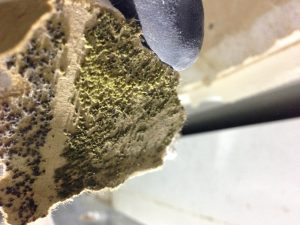
Hiring a Professional to Remove Mold Inside Walls
If the removal of mold in walls problem is extensive or you’re unsure how to handle it safely, hiring a professional mold remediation company may be the best option. These experts have the knowledge, tools, and experience to effectively remove mold in walls and prevent it from returning.
When hiring a mold remediation company, it’s important to research and choose a reputable and experienced provider. Look for licensed, insured companies with a track record of successful mold removal projects.
It’s also a good idea to get multiple quotes and ask for references before deciding.
During the mold removal process, the professionals will first assess the extent of the problem and develop a plan of action. This may involve containment of the affected area, removal of contaminated materials, and thorough cleaning and disinfection of the affected surfaces. They may also recommend steps to address the underlying moisture issue to prevent future mold growth.
One of the key benefits of hiring a professional mold remediation company is their ability to dispose of the contaminated materials properly. Mold can be hazardous to handle, and improper disposal can spread spores and further contamination. Professional companies have the necessary equipment and protocols to safely remove and dispose of mold-infested materials.
Conclusion
Mold in walls can be a persistent and frustrating problem, but with the right approach, it can be effectively removed and prevented from returning.
By understanding the causes and risks of mold, identifying the signs of mold growth, and taking the necessary precautions, you can banish mold for good and enjoy a healthier, mold-free living space.
Whether you tackle the mold removal process yourself or hire a professional, it’s important to act quickly and address the underlying moisture issue. With our foolproof guide, you’ll have all the information you need to successfully remove mold from your walls and keep it from coming back.
Don’t let mold ruin the appearance and air quality of your home. Follow our step-by-step instructions and expert tips, and say goodbye to mold for good. Reclaim your walls, breathe easier, and enjoy a healthier, mold-free living environment.


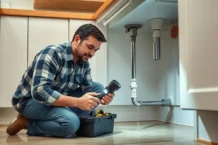
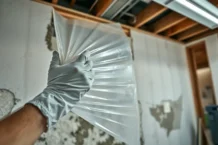
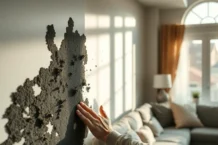

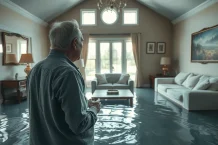
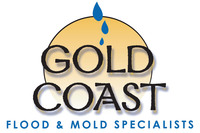


Follow Us!